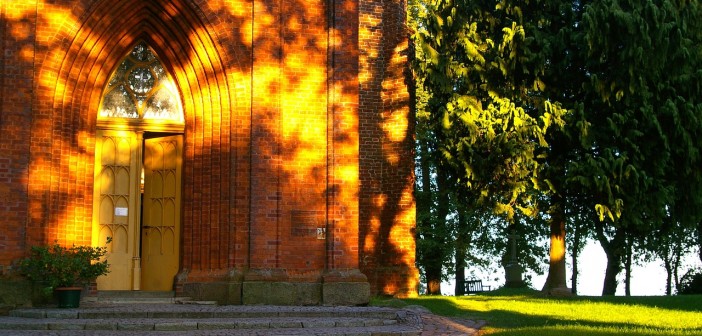Readers of Leading Ideas are familiar with the Lewis Center’s focus on the church’s challenge to “reach more people, younger people, and more diverse people.” I recently attended two churches not of my own denomination that seem to be succeeding in this task.
The distinctives of the Brooklyn Tabernacle are in many ways similar to City Church. They include the importance of faith and the expectation of God working in the lives of those gathered, lively worship, disciple making, and similar preaching styles.
The first church is City Church, located in Seattle, Washington, and though only twenty years old, is now one of the largest churches in the state. I was in the neighborhood to participate in my stepson’s wedding festivities. This church is where he, his new wife, and most of their friends attend. They have been part of a young professionals’ ministry numbering in the hundreds. Even in the parking lot at 9 am, I quickly noticed that most of the people walking toward the sanctuary were much younger than I and were very diverse. This church was in a relatively upscale, close-in suburb with demographics that did not mirror the congregation that assembled that morning. The congregation was younger and more diverse.
Several characteristics about this church could contribute to the size and makeup of the congregation. The worship service was, in popular parlance, very contemporary. No order of worship was handed out. The sanctuary resembled a movie studio auditorium, which, in fact, it was. The service is broadcast to two other campuses simultaneously. The music was high energy and of professional quality. No pulpit was in sight. The pastor preached without notes for over forty minutes and was highly engaging. The entire service was an hour and a half, precisely.
One distinction of this congregation is a strong emphasis on faith. This is evident in the preaching and in the congregants, at least those I met. This is a faith that believes that God does and will continue to, in even greater fashion, make a difference in their lives. Another distinction, though not apparent in worship, is their disciple-making process. This church has an extensive small group ministry that bears fruit. Those showing sufficient progress in their faith development and indicating leadership potential are invited to participate in the church’s leadership training program. This process is lengthy and well designed. Those completing it receive recognition in a service with all the trappings of an ordination service, except the ordination. They can then serve as leaders of small groups or in other capacities.
I attended the second church, the Brooklyn Tabernacle’s Tuesday night prayer service, within ten days of the first. This service had about 2,000 people in attendance and lasted over an hour and a half. This church was originally a white church of around 25 people in the 1970s and is now one of the largest and most diverse congregations in New York. Their choir has won six Grammys for their albums. Those assembled for the prayer meeting appeared to be only around ten percent white, with many of those being out-of-town guests. While not as youthful as City Church, those present formed a much younger profile than most churches.
Though a prayer meeting, this service resembled a worship gathering. An outstanding group of musicians aided in a time of singing. There were announcements, an offering, and a sermon. Of course, there was prayer which took place from the pulpit. It took place in an altar call time. It also took place when prayer request cards were distributed to everyone present and then all were invited to pair up and pray with a neighbor of like gender. The buzz in the place was electrifying. After the prayer, the sermon was preached by what appeared to be a staff pastor. While a pronounced pulpit was present, he spent little time behind it. He was animated, clear, and gave a message both challenging and comforting.
The distinctives of the Brooklyn Tabernacle are in many ways similar to City Church. They include the importance of faith and the expectation of God working in the lives of those gathered, lively worship, disciple making, and similar preaching styles. To differentiate, the Brooklyn Tabernacle style is much influenced by the large African American portion of their membership. Also, prayer is emphasized much more than in most churches.
In this time of stress for many congregations, these two are undeniably vital. Both felt alive with the congregations participating actively. While measuring the “presence of God” is certainly subjective, a strong case can be made for this key component of vitality in these churches.
With any lifting up of successful churches, the concern is that while their particular methods may work in their contexts, they may not work so well in others. Obviously not every church that functions like these two will grow to be a megachurch. Small churches just cannot do what large ones do in resource-intensive aspects of ministry. Furthermore, some will raise objections over the theological orientation of these two churches. Nevertheless, there are some takeaways here. Faith can be lifted up and encouraged. Preaching can be more dynamic than is so often found. Prayer can be greatly increased. Disciple-making processes can be improved.
These two churches have achieved what should be the goal of every church: reaching people across differences. It is because, in the words of Lovett Weems, what draws them to church is stronger than what differences push them apart. Churches learning from these and other vital churches may just find they are reaching more people, younger people, and more diverse people.
This article is adapted the monthly online newsletter, Background Data for Mission, for which John serves as editor.







